Venus flytraps are carnivorous plants that live in the wild. They’re also very popular as houseplants because they look cool and make great decorations.
This article will cover how often to feed a Venus flytrap, and what is good and bad food.
- Related article: Venus Flytrap Care Overview
How Often to Feed a Venus Flytrap
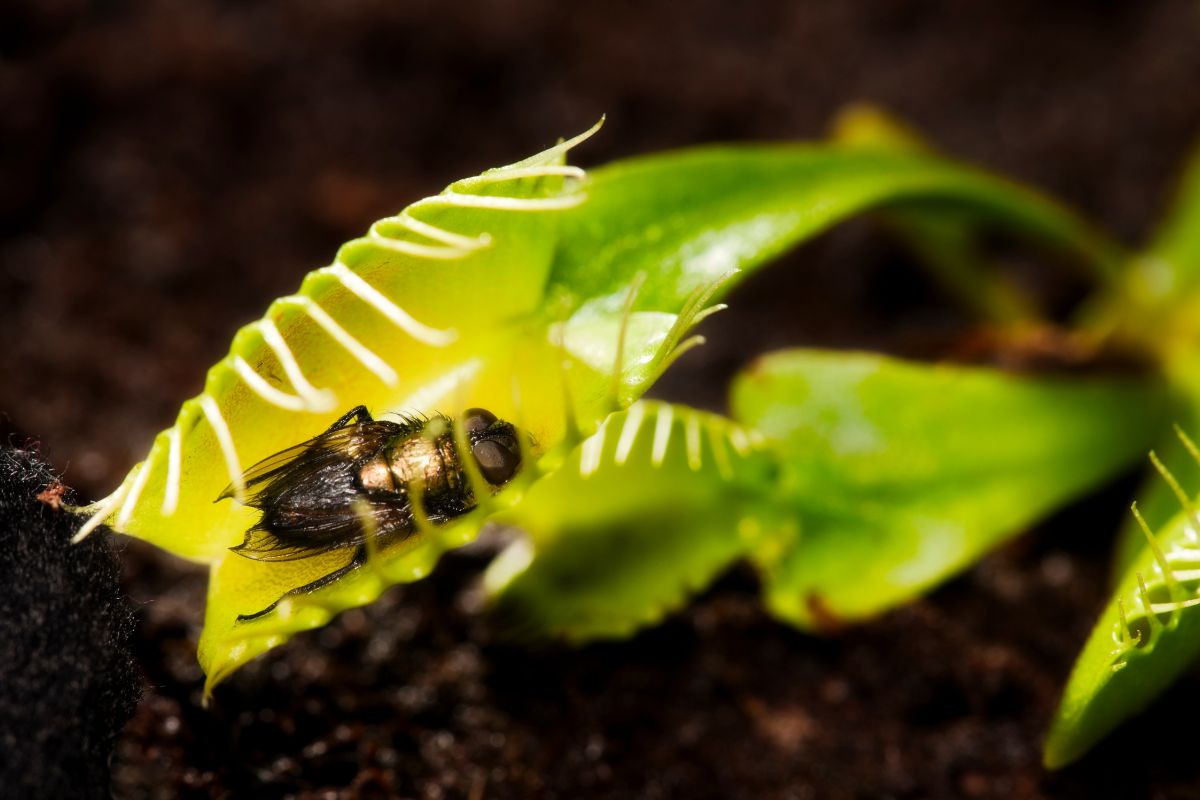
How often to feed a Venus fly trap and when to feed a Venus fly trap will differ depending on whether the plant is growing outdoors or indoors.
When the Venus flytrap is growing outdoors, you do not need to feed it at all. They do not need any help catching prey. They are very good at attracting prey and trapping them. It is rare to see an open Venus flytrap because they’re often digesting a bug, which can take 1-2 weeks.
When growing the Venus flytrap indoors, you will need to feed each trap every 2-4 weeks with an insect. Do not feed all the traps with food at the same time, because there’s no need to. The nutrients will be shared between the traps and rest of the plant.
Feeding all the traps at once will also result in overfeeding the Venus flytrap, which can lead to the plant’s death. You should only feed the traps when they are actively opening and closing.
Depending on the season, it’s sometimes not a question of how often do you feed a Venus fly trap, but whether or not they need to eat at all.
When Venus flytraps are in the winter dormancy period, there is no need to feed them. Flytraps are more than capable of photosynthesizing for their own needs.
During the winter months, flytrap leaves drop off, and the trap becomes less responsive. There aren’t many insects around during the winter, so the traps don’t waste energy trying to catch anything that isn’t there.
Venus flytraps take a very long time to digest insects. This means they don’t need to be fed as much as other plants. You should only feed one trap of the entire plant. The nutrients from an insect will be enough for the entire plant.
Plants need time to grow after being fed. Feeding plants too soon may cause them to become weak or sick. Don’t feed your plants more than once every two weeks. After you’ve fed your plants, wait about two weeks before feeding them again.
Venus Flytrap Feeding Process
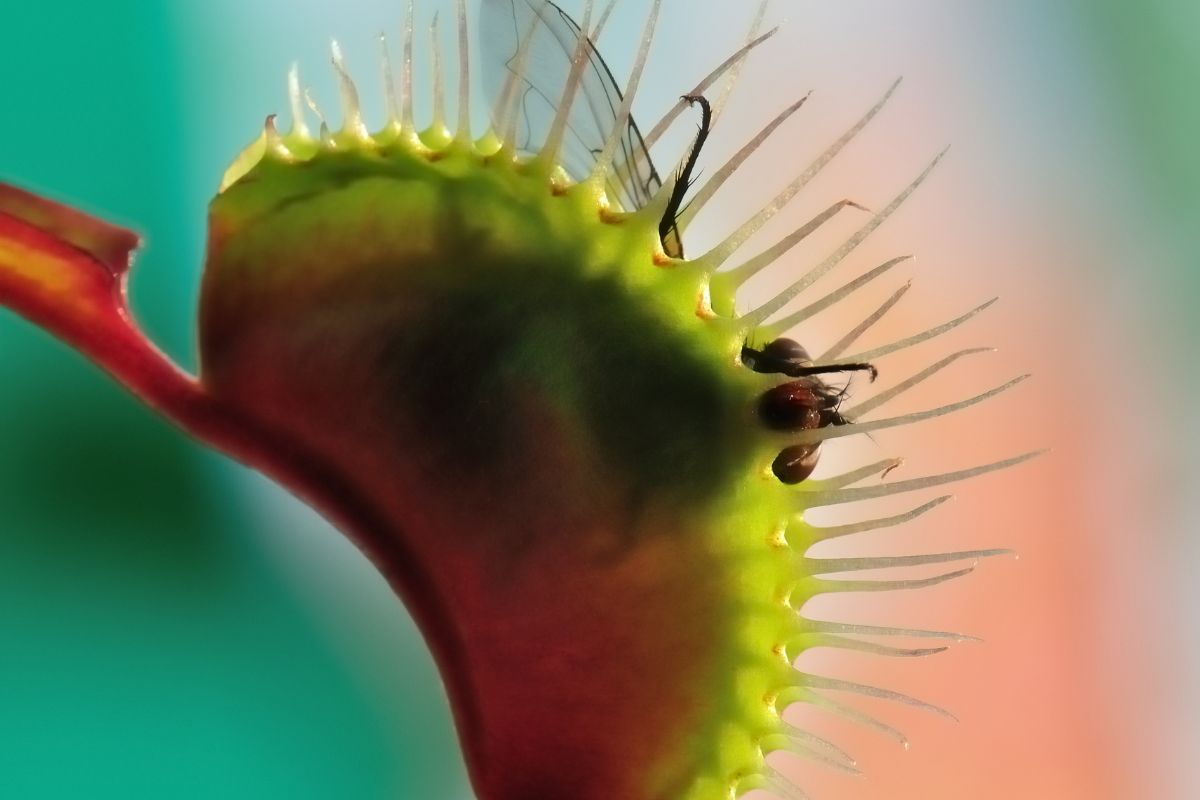
How to feed a Venus flytrap is an important part task to learn, especially when you’re growing them inside the house where there aren’t a lot of bugs for them naturally.
Venus Flytraps are carnivorous plants that eat insects because their native habitat (bogs of coastal North and South Carolina) don’t contain nitrogen, potassium, and phosphorus (NPK) that other plants use to grow.
Flytraps are able to survive by eating insects and using their digestive juices to break down the bugs to get the nutrients. Their diet is incomplete without eating bugs.
Venus Flytrap plants need to eat bugs to survive. They can catch their own prey if they’re hungry enough. But when they’re fed regularly, they’ll grow bigger and healthier. People who care for them will enjoy seeing how big they get.
Only feed insects to your Venus Flytrap, and make sure they fit inside the trap.
How to Feed a Venus Flytrap
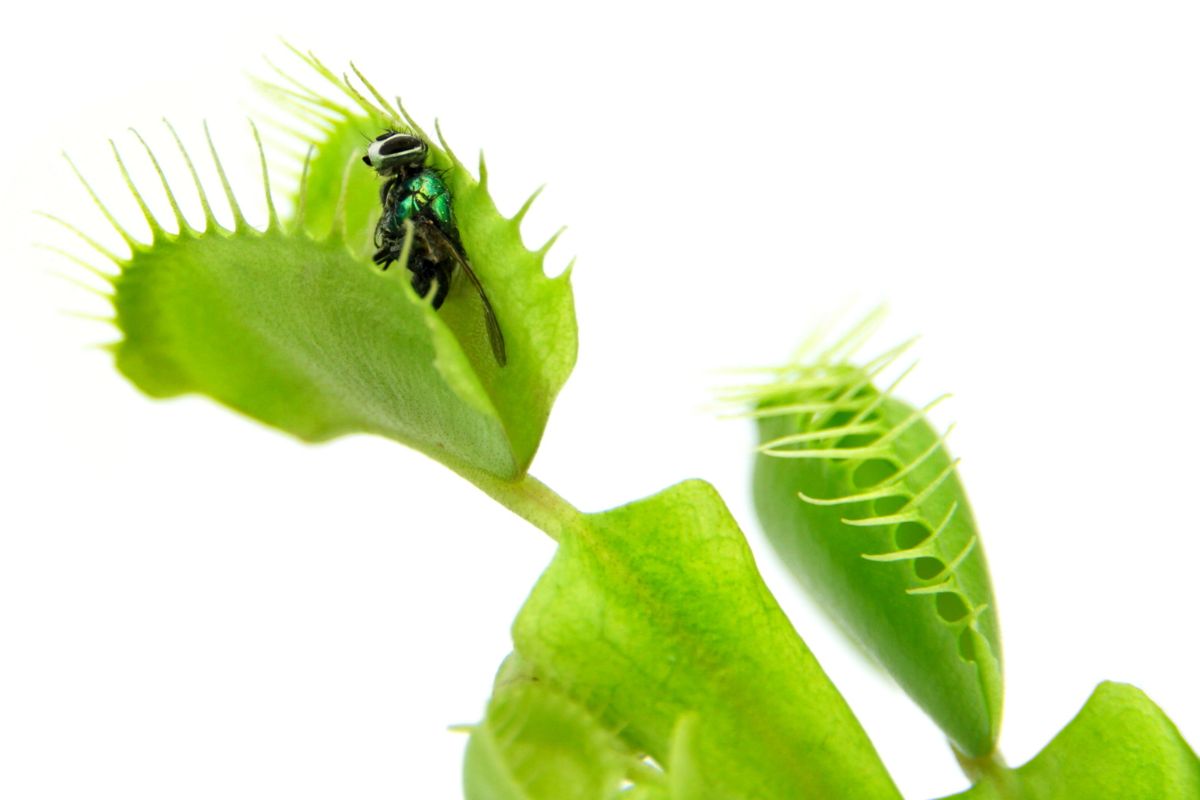
Feeding a Venus Flytrap is easy. Follow these steps to learn how to feed the Venus flytrap.
1. Get the Venus Flytrap Food
You should choose something that is small enough to go into the trap of your plant like a fly or spider. You’ll need to put it in the trap for feedings, so make sure it’s small enough.
A general rule of thumb is to get an insect that’s 1/3 the size of the trap.
Read more in this Venus Flytrap Food Guide.
2. Prepare the Bug
You’ll only need to do a little preparation if you’re feeding dead or dried-up bugs. If the bug is alive, you don’t need to do much to prepare the bug.
For bugs that are dry, drop a little water on the dead bug to moisten it. A few drops of water will allow the dead insect to be more flexible and easier for the trap to digest.
To more easily handle bugs when feeding, you can use a pair of tweezers.
3. Locate the Trigger Hairs
Locate the trigger hairs on the bottom of the trap. These hairs are sensitive to touch and will close the trap if touched.
You can find the trigger hairs by looking in the lobes. Look for the thin filaments found in the center of the lobes.
You’ll need to stimulate the trigger hairs at least a couple of times for the trap to close, so the Venus flytrap plant will start digesting the bug.
4. Put the Insect Inside the Trap
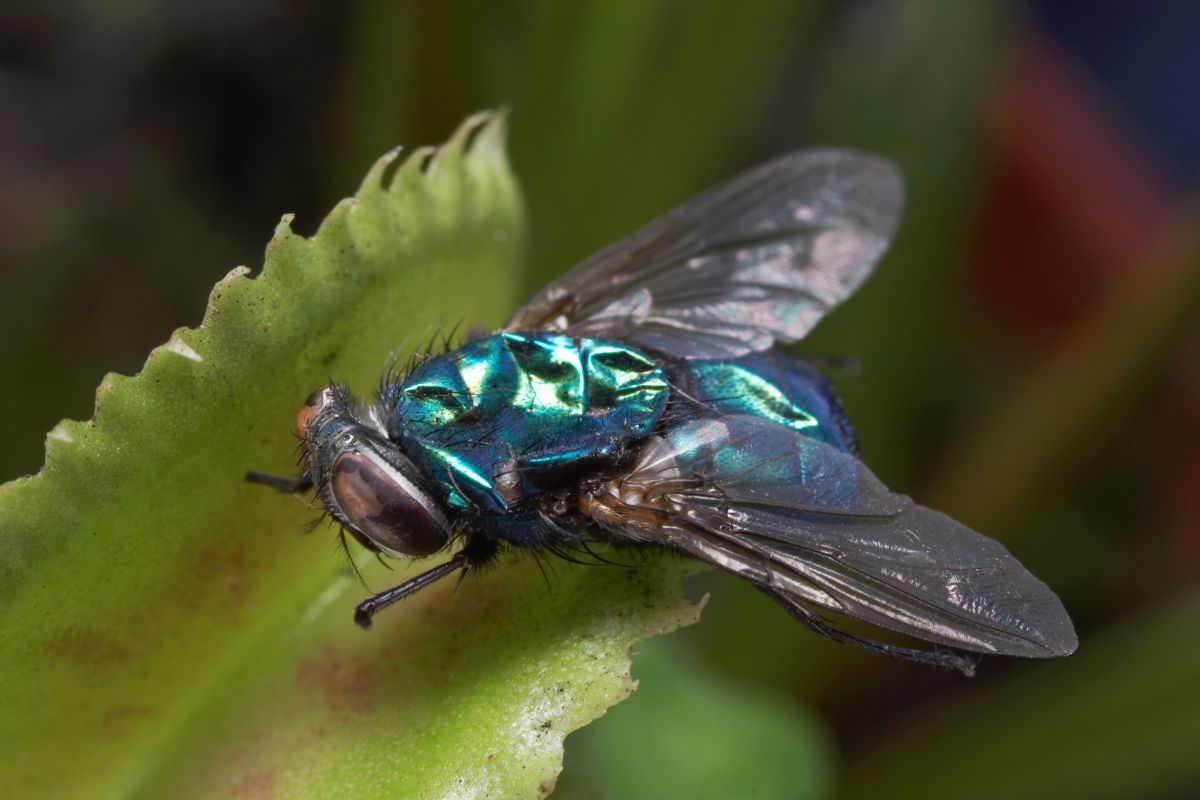
It’s time to put the insect inside the trap. Using your tweezers, carefully place the bug in the trap.
Live bugs will usually squirm and brush the trigger hairs, making the trap close.
Since dead bugs won’t brush the trigger hairs themselves, you’ll need to move the bug over the trigger hairs a couple of times. Then, as the trap is closing, you’ll need to quickly remove the tweezers.
5. Stimulate to Completely Close Trap If Needed
Once the trap has closed around the bug, you’ll need to stimulate the trap to ensure that it closes completely.
Live bugs will continue to struggle and the Venus flytrap will continue to close its trap until it’s completely closed.
But dead bugs won’t struggle, so the trap may not close completely by itself. If that’s the case, use your tweezers to stimulate the leaves to encourage the trap to close completely.
6. Monitor the Leaf
Keep an eye on the leaf to see if it withers. A leaf can wither because of its age or because the trap is not fully digesting its food due to a bug being too large. The plant doesn’t process them fully.
Other than that, you’re all done with feeding your Venus Fly Trap!
Which Bug Size Is Appropriate for Venus Flytraps?
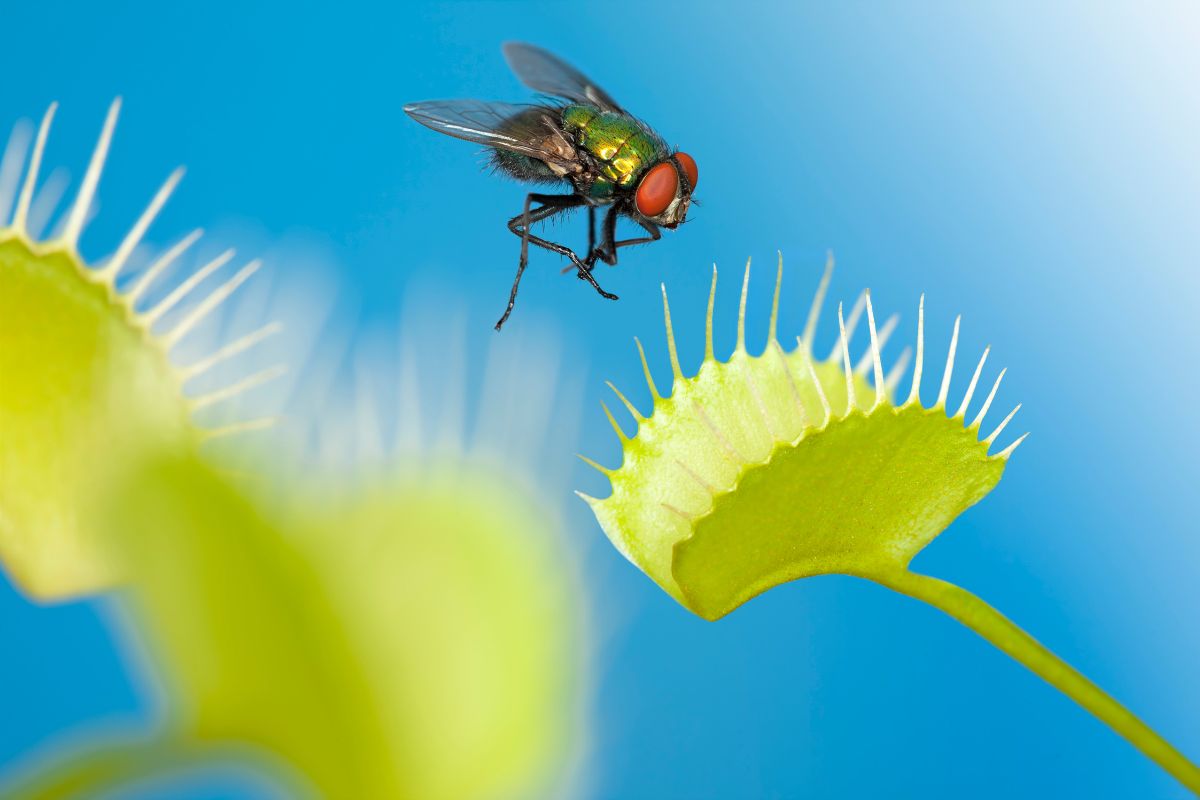
The best bug size for Venus flytraps to eat is about one third the size of the trap. The reason is that large insects may not be able to be digested by the trap. That can lead to the plant not getting its nutrients, weakening, losing leaves, and potentially dying.
- Related article: How Big Do Venus Flytraps Grow?
Acceptable Food for A Venus Flytrap
Venus flytraps are carnivorous plants that feed on insects. Live prey is commonly fed to them. Smaller bugs are easier for the plant to eat. Larger ones could damage the plant.
Venus flytraps love to eat:
- Ants
- Beetles
- Bloodworms
- Crickets
- Flies
- Fruit Flies
- Grasshoppers
- Mealworms
- Spiders
- Wasps
Unacceptable Food for A Venus Flytrap
A Venus flytrap should not be fed anything bigger than 1/3 the length of a trap. Some of foods that should not be fed to Venus flytraps include:
- Garden Snails
- Large Beetles
- Human Food
- Caterpillars – they can eat themselves out of the trap.
Venus Flytrap Feeding Frequency Final Thoughts
When deciding how often to feed the Venus Flytrap, it’s better to err on the side of underfeeding than overfeeding. Don’t worry if you miss a feeding, because the plant will be just fine. It will still work fine.
Check out these other related articles:



This is the first fly trap I have been able to keep alive. I am amazed with it. Tonight I fed it for the first time. I gave it a small mealworm. It closed up so fast that it shocked me. So I understand by reading that I should only feed one of the feelers and wait 2 weeks for the next feeding. I hope I am right. I don’t want to kill the plant.
Awesome! Sounds like your Venus flytrap loved the mealworm 😀 You’ll want to see how your flytrap is doing for feedings because different environments could affect how often it needs to feed.